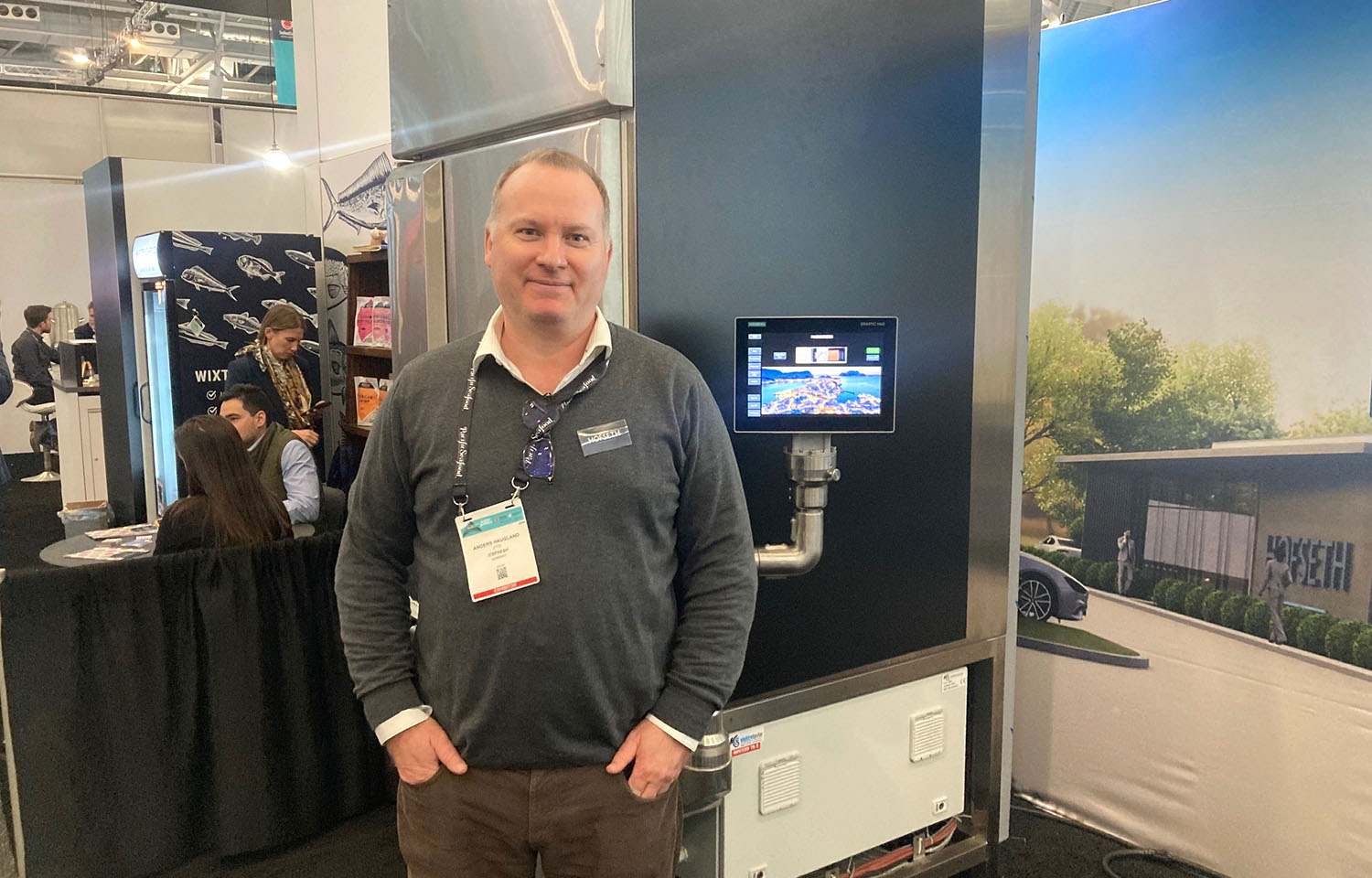Hofseth International is developing a state-of-the-art seafood handling system, with a refreshing facility to be built on the U.S. East Coast to serve as its hub.
As part of its plan to ditch its use of air freight, the Alesund, Norway-based salmon and trout farmer and processor is developing a freezing and defrosting system that allows it to deliver high-quality fish products to the U.S. via ocean freight.
Hofseth’s Icefresh Technology “can release a lot of opportunity,” Hofseth Chief Technology Officer Anders Haugland told SeafoodSource at the 2024 Seafood Expo North America in March in Boston, Massachusetts, U.S.A.
“We think that flying seafood across oceans is not a good idea,” Haugland said. “Our refresh program, where we freeze, transport, and thaw on demand, improves quality, saves a lot of CO2, and actually has a cost benefit for our clients by reducing waste.”
In 2022, Hofseth flew 2,479 metric tons (MT) of fish from Europe to the U.S., resulting in 32,455 MT of carbon dioxide emissions.
“Despite accounting for only 4.63 percent of our transported volume, airfreight contributes to a staggering 81 percent of our transport-related emissions,” the company said in its 2022 Sustainability Report. “This stark contrast underscores the critical need for optimizing and exploring alternative modes of transport to achieve our sustainability goals.”
Hofseth’s Icefresh system freezes its salmon immediately after it is slaughtered. Hofseth Owner Roger Hofseth said the process “locks in freshness” and maximizes quality.
“It is about the fish being ‘blood fresh’, which allows us better control of the bacteriology during shipping,” Hofseth Owner Roger Hofseth told E24 in 2021.
But the previous problem with Hofseth’s system was that its fish was delivered frozen to the buyer, who had the responsibility of defrosting it, according to Haugland. That’s where quality issues could emerge, he said.
“The issue with thawing is you want to move the product from a frozen state to an optimum chilled state by transporting it through temperature zones as fast as possible where you can have negative impact of ice crystal growth and also the enzymes and the salts that are in the liquid phase around the crystals,” he said.
Hofseth has developed smaller defrosting machines specializing in that process, each of which is about the size of a large refrigerator and capable of thawing one ton of fish daily, with a daily savings of 15 MT of CO2 versus other thawing technology, according to Haugland.
In the next phase of the Icefresh project, Hofseth is planning to build a specialized facility in the U.S. – likely to be located on the U.S. East Coast – that will …








